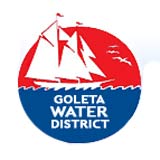Goleta Water Board Talks Moratorium on New Connections, Annexations
Members Also Discuss Lake Cachuma Carcinogens, UCSB's Planned Expansion
At Tuesday evening’s meeting of the Goleta Water Board, several members of the public queued up to call for a moratorium on all new annexations, water connections, and meters. A response to the governor’s announcement last week of a statewide drought, they said it was consistent with Goleta’s existing water ordinances to effect the moratorium until the District’s water supply can be reassessed. Although much of the state currently faces a severe drought, groundwater aquifers and reservoirs in Santa Barbara County are currently filled to capacity.
Safety Water
Another issue of hot debate concerned the results of a graph which depicted groundwater levels from 1972 until today, the reason being that the 1972 level is considered to be the level at which an adequate drought buffer exists, not to be drawn upon unless there is an actual drought. The district currently has plans to pump approximately 1,800 acre-feet into Lake Cachuma to offset the deposition of carcinogens in the County’s drinking water supply during and after the Zaca Fire last summer.

Dan Wendell, an independent contractor who used to work for the Goleta Water District back in the 1980s, was hired by the District’s General Manager, Kevin Walsh, to complete a study of groundwater level readings taken from three wells located in the district. The point of contention came with the selection of the wells, with Director Bert Bertrando postulating that the wells had been “cherry picked” by someone to create data more favorable to selling more water. A round of questioning revealed that if the wells had been picked for some specific purpose, nobody knew who or why, since the selection had occurred long before any of the current board members or staff were active. Jack Ruskey, a very vocal regular at the water board meetings, cautioned against drawing upon Goleta’s drought buffer.
According to a USGS study produced by Bertrando, some 46 wells were examined, showing water levels in the aquifer to be slightly below 1972 levels. However, because Wendell’s data showed levels to be sufficient for pumping, the Board voted 4-1 – with Bertrando casting the dissenting vote – to allow the pumping, providing it does not bring the water levels in the aquifer below 1972 levels.
UCSB
The Board opted to ask for a thirty day extension to consider water usage by new development at UCSB. The university’s Long Range Development plan includes new housing, classroom and office facilities which are projected to use approximately 800 acre-feet per year of additional water. While the impacts of this increase upon the district are uncertain, a number of options are being considered, including the potential purchase by the university of 200 acre-feet per year of State water.



